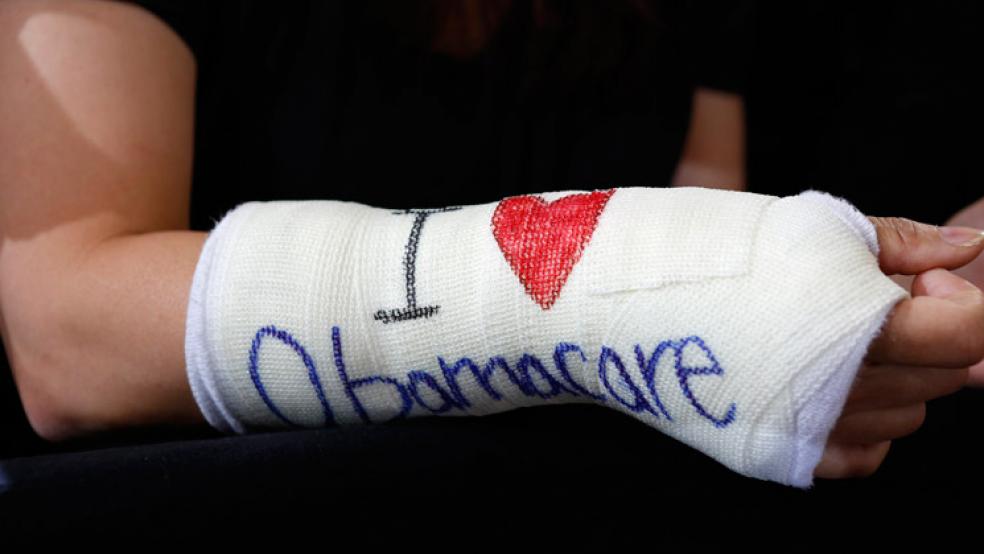The pace of U.S. health care spending picked up slightly last year, reaching a total of $3.2 trillion or $9,990 per person in the country. While a number of factors were at play, the increase was largely due to expanded coverage of individuals who signed up for Obamacare or who took advantage of a major expansion of Medicaid, according to a new study released on Friday.
The new analysis from the Office of the Actuary at the Centers for Medicare and Medicaid Services (CMS) estimated that health care spending grew at a rate of 5.8 percent in 2015, less than a percentage point increase from the previous year. Viewed as a share of the entire U.S. economy, health care spending last year constituted 17.8 percent of Gross Domestic Product, up from 17.4 percent in 2014.
Related: Democrats Gear Up for the Fight Over Medicare Changes
“Coverage expansions that began in 2014 as a result of the ACA helped increase the percentage of the population with health insurance from 86.0 percent in 2013 to 90.9 percent in 2015,” according to a summary of the report. “This expansion of coverage continued to affect health spending growth in 2015.”
The findings were published online by the journal Health Affairs.
The report comes at a time when President Obama’s signature health care program is under its greatest threat yet. President-elect Donald Trump and House and Senate Republican leaders have vowed to push through legislation in January to repeal much of Obamacare and replace it in the coming years. GOP critics have long denounced the subsidized health insurance program for being too costly, for driving up premiums and out of pocket and for imposing onerous regulations and mandates on individuals and businesses.
The new report acknowledges that while overall health care costs have increased after five years of historically low growth, Obamacare has substantially raised the rate of insured Americans from 86 percent in 2013 to 90.9 percent in 2015. The expansion of Obamacare coverage, including millions who acquired insurance for the first time through an expansion of the Medicaid program in more than 30 states and the District of Columbia, continued to impact health spending growth in 2015.
According to the report, the biggest driver of rising health care cost was accelerated spending for private health insurance, which climbed by 7.2 percent to $1.1 trillion. At the same time, hospital care costs rose by 5.6 percent to $1 trillion and clinical services costs rose by 6.3 percent to $635 billion.
Related: Two Big Reasons Prescription Drug Prices Are So Much Higher in the US
Moreover, Medicare spending on the elderly reached $646.2 billion, a 4.5 percent increase over the previous year. Meanwhile, Medicaid expenditures for the poor totaled $545.1 billion in 2015, a 9.7 percent increase.
Amid concern about soaring prescription drug prices and gouging by manufacturers, the report found that spending on prescription drugs rose 9 percent to $324 billion last year. That constituted one out of every 10 dollars spent on healthcare.
“Although the 2015 spending growth of 9.0 percent was slower than the rate of 12.4 percent in 2014, growth in prescription drug spending was faster than that of any other service in 2015,” the report stated. “Recent rapid growth is attributed to increased spending on new medicines, price growth for existing brand-name drugs, increased spending on generics, and a decrease in the number of expensive blockbuster drugs with expiring patents.”





